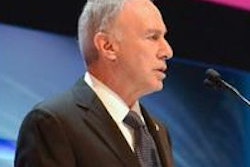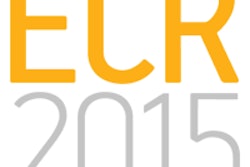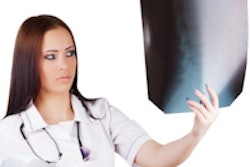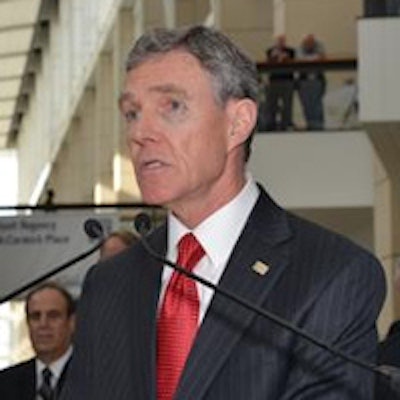
CHICAGO - Combining radiology's historical strength in research and discovery with a new focus on patient care will position RSNA and radiology for the next 100 years of service to the world, RSNA President Dr. N. Reed Dunnick told attendees at the opening session of the society's 100th annual meeting.
While that will require a new commitment, "I'm convinced that we will conduct the research needed to advance our field, and that this new, exciting approach to radiology will prevail," he said. "It's a golden opportunity to truly shape the future of our profession."
Today's standard of medical care would not have been possible without the discoveries and contributions of radiologists over the past 100 years, Dunnick noted.
"From the stunning discovery of radiation to be used to treat disease to the remarkable development of imaging modalities such as CT, ultrasound, nuclear medicine, and magnetic resonance, our profession has changed medicine," he said.
What hasn't changed during the past 100 years is the profession's desire to do things better, he added.
A heritage of research and discovery
The fuel that has powered RSNA and radiology is technical innovation, according to Dunnick. For example, improvements in radiography and fluoroscopy in the early years enabled radiologists to image patients with less radiation. New types of contrast media were developed that were safe enough to be administered intravenously, enabling "us to image not only vessels, but also the organs that concentrate and excrete that contrast material to kidneys, ureters, and the bladder," he said.
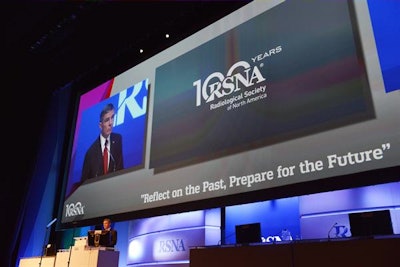 Dr. N. Reed Dunnick, president of RSNA 2014, welcomes delegates to the 100th annual RSNA meeting in Chicago during the opening ceremony on Sunday.
Dr. N. Reed Dunnick, president of RSNA 2014, welcomes delegates to the 100th annual RSNA meeting in Chicago during the opening ceremony on Sunday.As the specialty grew and became too difficult to master as an entire field, subspecialties were born, including radiation oncology, diagnostic radiology, and interventional radiology. In recent years, there has been a pendulum swing toward much closer interaction between radiation oncology and diagnostic radiology.
"Other new, specialized segments of knowledge and expertise within radiology continue to emerge, just as they have since RSNA's founding a century ago," he said. "In this cauldron of change, groundbreaking research and innovative technology has occurred, particularly over the past 50 years."
In his own lifetime, the face of medical imaging and image-guided therapy has changed dramatically.
"Radiologists have developed exciting scientific achievements that have changed our patients' lives," Dunnick said.
Modality advances
Ultrasound has entered a renaissance phase of rapid enhancements in imaging and new applications, Dunnick said.
"This includes ultrahigh frame rates that permit new applications such as shear-wave speed imaging for measuring tissue stiffness," he said. "Ultrasound contrast agents are in a continuous wave of evolution and improvement. There are now tissue and antigen-specific agents that bind to receptors on vessel walls [and] there are also bubble agents for ultrasound-sensitive nanodroplets that can be used to transport drugs or genes for transfection to specific sites for therapy."
Externally guided ultrasound thermal ablation techniques now include phase-corrected beams that can treat intracranial targets through an intact skull. Mechanical ablation methods -- either with ultrasound or MR guidance -- are very precise.
CT is another area of amazing growth, Dunnick said. The modality has become a bread-and-butter tool in medicine, profoundly changing the landscape. Exploratory laparotomies are no longer performed due to the accuracy of CT in identifying abdominal pathology.
"CT has progressed rapidly from head-only scanners to whole-body machines that are able to image entire sections of tissue at once and to use more than one energy beam to help predict the nature of the tissue imaged," he said.
CT has also had a particularly dramatic effect on nuclear medicine, Dunnick noted.
"Imaging studies in nuclear medicine provide valuable physiologic information but suffer from poor spatial resolution," he said. "Coupling these studies with the exquisite anatomical information found in CT was an immediate success, and soon PET/CT scanners replaced conventional PET scanning."
For its part, MRI has made possible the acquisition of all kinds of new information about structures within the body.
"I believe we are still in the early phases of realizing the full potential of MR imaging and spectroscopy," Dunnick said. "This impressive modality has greater tissue differentiation than CT and has become the preferred modality for imaging organs such as the brain, the spinal cord, the liver, and the prostate gland."
Transformational changes
The cumulative effect of all these modalities has been nothing short of transformational for medicine, according to Dunnick.
"Just think of it: Today, an imaging study is obtained at almost every medical encounter," he said.
Research and technological innovations have been the engines of radiology's professional growth over the past century and will no doubt continue to serve the specialty well in the future, he added. Many new pathways and exciting opportunities are just waiting for the creative ideas of the next generation of dedicated radiologists.
For example, radiologists now have the opportunity to bring together data that can yield both the best diagnosis and recommendations for the next management step, he said.
"In order to be accepted as an imaging biomarker and be fully integrated into patient care protocols, we must move from mere descriptive reporting to quantitative imaging," he said. "With advances in medical imaging and the development of imaging biomarkers, we are rapidly moving to a new era of predictive, preventive, [and] personalized medicine, one in which radiologists can do even more to help our patients. This is our future, and I believe it's time we ratchet up our abilities to fully explore and develop this new role for radiology. We owe it to the patients we serve."
Recommitting to research
The time is right to re-energize our commitment to research, moving radiology forcefully into this new era, Dunnick said.
"Predictive medicine will move forward much faster if the resources of our radiology community are fully engaged," he said.
The first step is to fully understand molecular processes at the cellular level. Innovative modalities and technologies can then be developed to leverage this information for the good of patients.
This will require the following:
- Developing the next generation of researchers
- New and better ways of educating radiologists
- Continued leadership in funding
- New partnerships across radiology
- Support for academic research
- Strong relationships with industry
Dunnick noted that partnerships must occur across radiology, with external sectors and with industry.
"The contributions from our partners in industry can't be ignored," he said. "If we're going to successfully complete our new journey to predictive, preventive, and personalized medicine, we must continue to form strong working relationships and exchange ideas with those who make the imaging equipment and services upon which we rely."
Patient-centered care
Fulfilling those six steps would be a great start, but it would only get the specialty halfway to its envisioned future; the other half maximizes the impact of exciting scientific advances by coupling them with true patient-centered care.
"Patient-centered care means going the extra mile with both your patients and your colleagues in medicine," Dunnick said. "Remember that there is a person behind the images of the patient we examine, a person whose care will be optimized with teamwork and the heightened awareness of the importance of good communication. Outcomes are improved when patients understand their care and when radiologists communicate more proactively with others on the healthcare team, sharing ideas and insights."
The profession of radiology as a whole is strengthened as radiologists' interconnection with patients and the healthcare team makes them more relevant and valuable than ever before.
"It's a formula that works, forming the basis of RSNA's Radiology Cares initiative, which we launched in 2012," Dunnick said.
The new paradigm of value over volume in radiology offers great promise for the future of the specialty.
"More and more radiologists are embracing these concepts, and our colleagues in other major disciplines are on the same path [and] we are aligning ourselves in the right way," Dunnick said. "I believe the transition period we are entering into will be as important as any in our history. It's a wonderful time to be a radiologist."
A lot of work needs to be done and many questions need to be answered before this new paradigm can be fully realized, however. This includes addressing how to provide this level of customized care while keeping costs affordable, and how to ensure safety, accuracy, and timeliness while new modalities emerge and old ways are phased out, he said.






